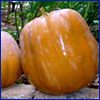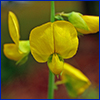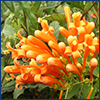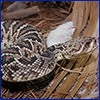The Neighborhood Gardener – October

Happy gardening!
Master Gardener Professorship
 The Master Gardener Professorship is a faculty-recognition program named in honor of Florida Master Gardener volunteers. The winner has been selected for 2016 and we would like to congratulate Jim Davis! As Horticulture Agent and Master Gardener Volunteer Coordinator for Sumter County, Jim oversees the residential horticulture program, teaching county residents about the Florida-Friendly Landscaping™ principles with a particular focus on irrigation. Learn more about the good work Jim's doing.
The Master Gardener Professorship is a faculty-recognition program named in honor of Florida Master Gardener volunteers. The winner has been selected for 2016 and we would like to congratulate Jim Davis! As Horticulture Agent and Master Gardener Volunteer Coordinator for Sumter County, Jim oversees the residential horticulture program, teaching county residents about the Florida-Friendly Landscaping™ principles with a particular focus on irrigation. Learn more about the good work Jim's doing.
Seminole Pumpkins
 Pumpkins get top billing this time of year, but did you know there is one particular pumpkin that does quite well in Florida? Seminole pumpkins can hold up through Florida's relentless summer heat and come out the other side producing delicious fruits for harvest. More
Pumpkins get top billing this time of year, but did you know there is one particular pumpkin that does quite well in Florida? Seminole pumpkins can hold up through Florida's relentless summer heat and come out the other side producing delicious fruits for harvest. More
Photo courtesy of Miranda Castro, Edible Plant Project
Wendy's Wanderings
 Is ignorance bliss? Sometimes I think so when it comes to spotting horticultural horrors. When we go through Master Gardener training, we learn so much about good horticultural practices. Sometimes, we learn that things we once thought were just fine are actually terribly wrong. More
Is ignorance bliss? Sometimes I think so when it comes to spotting horticultural horrors. When we go through Master Gardener training, we learn so much about good horticultural practices. Sometimes, we learn that things we once thought were just fine are actually terribly wrong. More
Toxic Plants
 The spooky and the sinister come out to play this time of year—even in the garden. Some popular landscape plants and pasture flowers have a dark side, too. Common plants like azaleas and lantana, blooming pasture plants like crotalaria (pictured), and other dangerous beauties contain properties that can make people and animals ill, sometimes (although rarely) causing death. The key is to be aware that there may be poisonous plants in your landscape. If a poisoning is ever suspected, you should contact your poison control center immediately. More
The spooky and the sinister come out to play this time of year—even in the garden. Some popular landscape plants and pasture flowers have a dark side, too. Common plants like azaleas and lantana, blooming pasture plants like crotalaria (pictured), and other dangerous beauties contain properties that can make people and animals ill, sometimes (although rarely) causing death. The key is to be aware that there may be poisonous plants in your landscape. If a poisoning is ever suspected, you should contact your poison control center immediately. More
Photo by John D. Byrd, Mississippi State University, Bugwood.org
Plant of the Month: Flame Vine
 Flame vine is quite the show-stopper with its numerous, fiery orange blooms. This fast-growing plant can be a dazzling sight to behold, but take care to control its aggressive growth. Flame vine will climb anything that offers decent support, so while it's great for fences, trellises, and archways, it's best to avoid planting near trees that could be strangled. The work is worth the effort; hummingbirds love the tubular flowers for their nectar. Hardy in USDA zones 9–11, flame vine can sometimes be found flowering as far north as zone 8b. More
Flame vine is quite the show-stopper with its numerous, fiery orange blooms. This fast-growing plant can be a dazzling sight to behold, but take care to control its aggressive growth. Flame vine will climb anything that offers decent support, so while it's great for fences, trellises, and archways, it's best to avoid planting near trees that could be strangled. The work is worth the effort; hummingbirds love the tubular flowers for their nectar. Hardy in USDA zones 9–11, flame vine can sometimes be found flowering as far north as zone 8b. More
October in Your Garden
 October is a great time to prepare and start planting strawberries. If you're worried you don't have enough space in the garden, strawberries do quite well when planted in containers. All parts of the state can plant these colorful, tasty berries this month.
October is a great time to prepare and start planting strawberries. If you're worried you don't have enough space in the garden, strawberries do quite well when planted in containers. All parts of the state can plant these colorful, tasty berries this month.
For more month-by-month gardening tips, check out the Florida Gardening Calendar. Three different editions of the calendar provide specific tips for each of Florida's gardening regions—North, Central, and South.
Snakes
 Snakes may send some gardeners running scared, but they're actually an important part of a Florida-Friendly landscape. Snakes play an important ecological role and will generally keep to themselves. Of the many species found in Florida, only six are venomous. It's best to never approach any snake, but approaching a venomous snake can be dangerous. If you think a snake may be venomous, call a professional. More
Snakes may send some gardeners running scared, but they're actually an important part of a Florida-Friendly landscape. Snakes play an important ecological role and will generally keep to themselves. Of the many species found in Florida, only six are venomous. It's best to never approach any snake, but approaching a venomous snake can be dangerous. If you think a snake may be venomous, call a professional. More
Survey Update
Our survey has been delayed just a bit. We are still looking forward to hearing from our readers. Be on the lookout for the survey coming to your inbox early next week.
What's Going On?
If your Master Gardener program or Extension office is having an event, be sure to share it with us.

